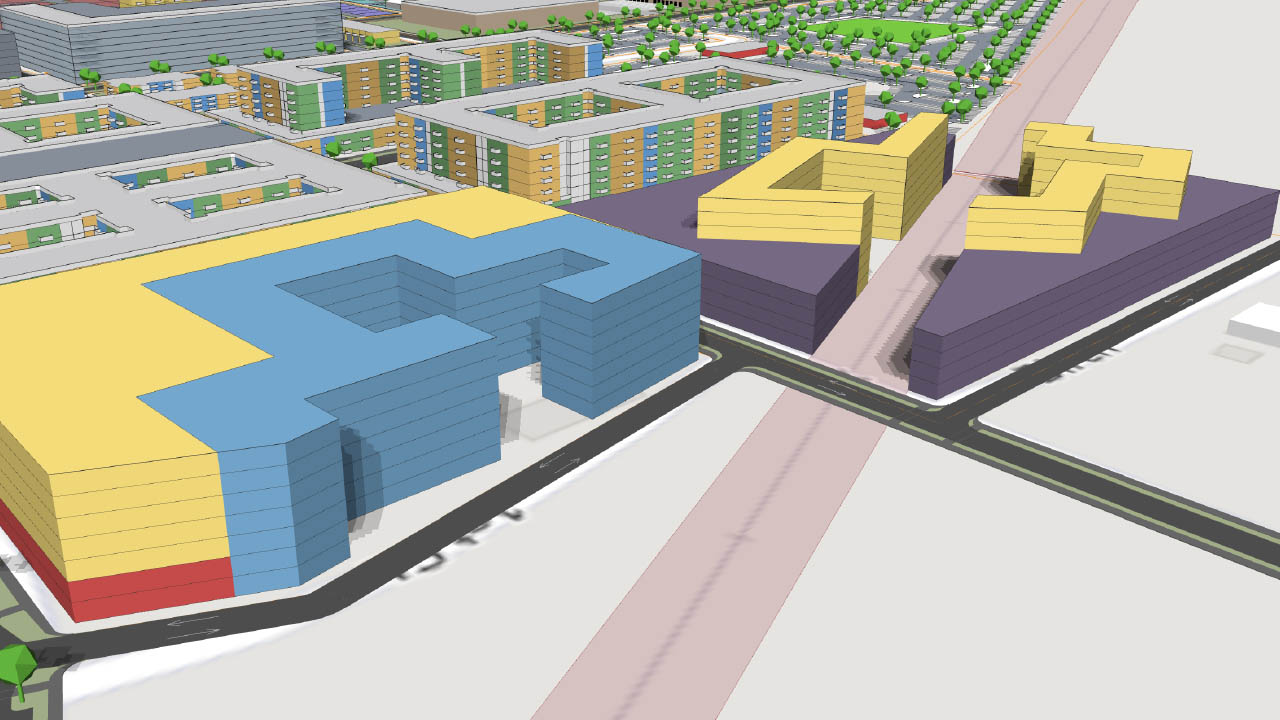Texas-based feasibility developer TestFit has been impressing architects and developers since 2016 with its real-time design automation tool. Now, in a shift of focus, it’s returning to design with a free massing tool
TestFit’s first magic trick was lay ing out apartment units and complex parking lots in a matter of seconds. Its primary developer, architect Clifton Harness, was fed up with late nights and overtime spent manually working on such tasks. With the help of college friend Ryan Griege, he founded a company – TestFit – with the aiming of putting automation tools into the hands of architects that were just as sick as he was of some of the humdrum work associated with residential projects.
As it turned out, architects were slow to adopt the tools, mostly due to reasons of cost. But property developers took to TestFit like ducks to a water feature. It is this customer base that has guided development of the tools. (For readers unfamiliar with the scale and speed of TestFit, it’s worth following Harness on LinkedIn, where he regularly posts videos of his application achieving seemingly miraculous things.)
At its heart, TestFit is a massive parametric solving engine. It’s designed to solve for hundreds of preferred site, design, and cost conditions, resulting in a single optimised design option. Because what it does seems like a magic trick, TestFit is commonly assumed to be based on AI. In fact, it’s mostly not AI at all. But even without that ‘secret sauce’, customers generally achieve two to three times as many design iterations per project, the company boasts. And site planning times are around four to ten times faster.
To a European mindset, the kind of multi-family housing on a massive scale that typifies the projects underway at TestFit’s US-based customers may seem alien, but the company still aspires to conquer new markets, and it plans to do so with a broader portfolio of tools. #Up until recently, TestFit’s core Site Solver tool was the only product it sold. It’s a desktop-based application that really makes use of the power of local hardware. Everything is geared around speed. It may not work in actual real time, but it works in as close to real time as is computationally possible.
Many of its competitors are web-based and rely on the ‘fire and forget’ principle, where results are returned after some waiting time. TestFit, by contrast, is about getting one solution, as quickly as possible, that accurately reflects all the input conditions. Historically, that has meant that TestFit’s graphics rendering may have been a little simple or flat, but recently, quality and detail have increased considerably, and without impacting performance.
Spacemaker, which operated in the same feasibility space, was acquired by Autodesk in 2020 and re-emerged as the cloud-based Forma in 2023. While TestFit initially got the cold shoulder from Autodesk, it was eventually invited into the tent and began offering a TestFit plug-in at Forma’s launch. This win for TestFit also introduced its team to the limits of cloud-based applications.

Urban planner
Since the introduction of Forma, the market for conceptual and feasibility tools has become a hotbed of development. A lot of that work is free, or at least bundled up in wider software suites, so that’s practically free to subscribers.
To stake its claim to this space and give the market a taste of what its software can achieve, TestFit has decided to create a ‘free’ version called Urban Planner. This is a desktop-based application that can be downloaded from TestFit’s website.
Urban Planner first brings in site maps or satellite views to start work. Users then create site boundaries and quickly model mixed-use developments with 2D/3D regions in real time. TestFit has included its impressive road creation and editing tool, which is dynamic and generates intersections automatically. Zoning regulations can be defined and applied, and angle setbacks applied to forms. TestFit will then tell you if your massing model meets the code criteria specified.

On the evaluation front, Urban Planner includes quantity take-off, deal editing and deal tabulation, which can be saved. There are direct integrations with Revit and Enscape, and files can be exported to DXF (for CAD software), SKP (for SketchUp), glTF (for saving 3D model views), CSV (for spreadsheets) and PDF. It supports saving to cloud-based storage. What’s missing? The famous parking layout tool is there, but only works in low-detail mode for custom parking stalls, vertical circulation and building core. In terms of building typologies, it will display multi-family, high/low density, core-based buildings, gardens and industrial, but again, at low detail. It doesn’t support unit mixes or custom unit types. For all those features, the full Site Solver is required.
So why would the company develop and give away Urban Planner for free? In response to that question, TestFit CEO Clifton Harness shoots from the hip. Revit’s primary reason for existence, he reckons, is to address documentation. But as far as conceptual design, he doesn’t believe it has been “particularly impactful”.
“Revit never asks, ‘What’s the minimum amount of information that you need to make an apartment building?’,” he points out. “Revit can model everything and do everything, but you don’t really need that when you have ‘commodity architecture’. We are a feasibility company, so we ended up creating a very parametric environment. We wanted to allow a broader range of customers to benefit from TestFit, to input geometry, roads, site splits, et cetera. If you’re an architect, you want that information to be there, but you don’t want to model it. At this point, we had most of what’s in SketchUp as a massing tool already built, plus all these other really powerful parametric real-time tools.”
TestFit is commonly assumed to be based on AI. In fact, it’s mostly not AI at all. But even without that ‘secret sauce’, customers generally achieve two to three times as many design iterations per project, the company boasts
Harness says that Snaptrude, Skema and Arcol – along with a long list of other new companies – are currently developing features that he and his business partner built in their mid-twenties, “because we had to build them anyways, to get to where we wanted”. But since these companies are now headed towards TestFit’s space, “we wanted to put out a TestFit product for free that we’re not ashamed of – a free tool, but with better features than all the others,” he explains.
“This is just the first release. We have a whole year of updates planned for it to make it even better.”
Due to its history of focusing on the US market, the TestFit team has been busy adding some more euro-centric basics, like support for the Euro, metric measurements, and so on. As TestFit wins more customers in Europe, its product should be able to accommodate more European use cases and reflect the variables required in European massing and site planning.
Conclusion
I get the distinct impression that Harness has been taken by surprise when it comes to the extent to which a whole group of BIM start-ups are seemingly focused on the industry’s early massing needs.
The reality is that creating a BIM tool is a marathon. In the early stages of development, massing tools can be useful to show off their relevance and potential to would-be customers.
For TestFit, then, Urban Planner is a flag in the sand, designed to chase off these start-ups – but I really don’t see any of them even contemplating providing the kind of detailed feasibility analysis for which TestFit is known. Few would-be competitors are on the desktop, either. The chances of their cloud applications being able to demonstrate comparable dynamic, real-time performance is for the birds.
Meanwhile, the team at TestFit is now working on generative design. It’s purposely not referring to this as ‘AI’. Instead, it’s a goals-based solver. The user sets the goals and, in real time, TestFit will hit “any target you want”, according to Harness.
In other words, it will provide a solution and populate thousands of other solutions, based on key performance indicators (KPIs) specified by the user. Once they have that single solve, the user can manipulate site constraints and TestFit will resolve continuously based on the changes. It will be fascinating to see how fast TestFit’s real-time AI will be.
Clifton Harness will be talking about the benefits of automation at AEC Magazine’s NXT BLD and NXT DEV conferences on 25 and 26 June 2024 at London’s Queen Elizabeth II Centre.






